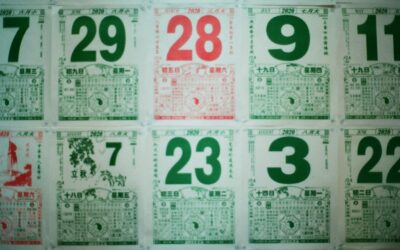In the fast-paced world of sales, understanding the intricacies of power dialer math is essential for maximizing efficiency and effectiveness. Power dialers are sophisticated tools that automate the process of dialing phone numbers, allowing sales teams to focus on what they do best: selling.
The math behind these systems is not just about numbers; it’s about leveraging technology to enhance human capabilities.
By analyzing call data, sales teams can identify patterns, optimize their outreach strategies, and ultimately drive better results. At the core of power dialer math lies the concept of connect rates—the percentage of calls that result in a conversation with a potential customer. This metric is crucial because it directly impacts the overall success of a sales campaign.
A higher connect rate means more opportunities for sales representatives to engage with prospects, leading to increased conversions and revenue. Understanding how to calculate and improve connect rates is fundamental for any organization looking to harness the full potential of their power dialer systems.
Key Takeaways
- Understanding the Power Dialer Math: It’s important to understand the calculations and algorithms behind power dialer technology to maximize its effectiveness.
- The Importance of Connect Rates: Connect rates directly impact the success of sales calls, making it crucial to focus on improving and maximizing them.
- Finding the Right Cadence: Establishing the right rhythm and frequency of calls is essential for optimizing connect rates and sales outcomes.
- Analyzing Outcomes: Regularly analyzing the results of sales calls and connect rates is key to identifying areas for improvement and adjustment.
- Using Power Dialer Math to Optimize Sales Performance: Leveraging the data and insights from power dialer math can significantly enhance sales performance and drive better outcomes.
The Importance of Connect Rates
Connect rates serve as a vital indicator of a sales team’s effectiveness. They reflect not only the efficiency of the dialing process but also the quality of the leads being pursued. A high connect rate suggests that sales representatives are reaching the right people at the right time, which is essential for building relationships and closing deals.
Conversely, low connect rates can signal issues with lead quality, timing, or even the approach being used by sales teams. Moreover, connect rates are closely tied to overall sales performance. When sales teams can consistently achieve high connect rates, they are more likely to meet or exceed their sales targets.
This creates a positive feedback loop: as representatives experience success, they become more motivated and engaged, further enhancing their performance. Therefore, understanding and improving connect rates should be a top priority for any organization aiming to boost its sales outcomes.
Finding the Right Cadence
Finding the right cadence for outreach is a critical component of maximizing connect rates. Cadence refers to the rhythm and timing of calls made by sales representatives. It encompasses not only how often calls are made but also when they are made.
Striking the right balance is essential; too many calls in a short period can lead to burnout for both the sales team and potential customers, while too few calls can result in missed opportunities. To determine the optimal cadence, organizations must consider various factors, including industry norms, target audience behavior, and historical data on call outcomes. Testing different approaches and analyzing results can help identify patterns that lead to higher connect rates.
For instance, some studies suggest that calling during specific times of day or on particular days of the week can significantly impact connect rates. By experimenting with cadence and continuously refining their approach, sales teams can enhance their outreach effectiveness.
The Relationship Between Connect Rates and Cadence
The relationship between connect rates and cadence is complex yet crucial for sales success. A well-structured cadence can lead to improved connect rates, while a poorly designed one can hinder performance. For example, if a sales team calls too frequently without allowing enough time between attempts, potential customers may feel overwhelmed or annoyed, leading to lower connect rates.
On the other hand, a thoughtful cadence that respects prospects’ time can foster positive interactions and increase the likelihood of successful connections. Additionally, understanding this relationship allows organizations to adapt their strategies based on real-time data. By monitoring connect rates in relation to different cadences, sales teams can make informed decisions about when and how often to reach out to prospects.
This adaptability is key in today’s dynamic market environment, where customer preferences and behaviors can shift rapidly.
Analyzing Outcomes
Analyzing outcomes is an essential step in understanding the effectiveness of power dialer strategies. Sales teams must not only track connect rates but also evaluate how those connections translate into tangible results—such as closed deals or revenue generated. This analysis provides valuable insights into what works and what doesn’t, enabling organizations to refine their approaches continually.
To conduct a thorough analysis, sales teams should leverage data analytics tools that can aggregate and interpret call data effectively. By examining trends over time, teams can identify which strategies yield the best outcomes and adjust their tactics accordingly. For instance, if certain times of day consistently yield higher connect rates and conversions, teams can prioritize those windows in their outreach efforts.
Calculating the Impact of Connect Rates on Outcomes
Calculating the impact of connect rates on outcomes involves more than just looking at numbers; it requires a comprehensive understanding of how each element interacts within the sales process. A higher connect rate typically correlates with increased opportunities for engagement, which can lead to more conversions. However, it’s essential to consider other factors that may influence this relationship, such as lead quality and follow-up strategies.
To quantify this impact, organizations can use metrics such as conversion rates—the percentage of connected calls that result in a sale. By analyzing these metrics alongside connect rates, sales teams can gain deeper insights into their performance and identify areas for improvement. For example, if a team has a high connect rate but low conversion rate, it may indicate that while they are reaching many prospects, they are not effectively communicating value or addressing customer needs.
Adjusting Cadence to Improve Outcomes
Adjusting cadence based on data-driven insights is crucial for improving outcomes in sales campaigns. As organizations analyze their connect rates and conversion metrics, they may discover that certain cadences yield better results than others. For instance, if data shows that calling prospects every three days leads to higher connect rates compared to daily calls, teams should consider adopting this approach.
Moreover, adjusting cadence isn’t just about frequency; it also involves timing and personalization. Sales teams should experiment with different outreach times and tailor their messaging based on prospect behavior and preferences. By continuously refining their cadence strategy in response to data insights, organizations can enhance their overall sales performance and drive better results.
The Role of Data in Power Dialer Math
Data plays a pivotal role in power dialer math by providing the insights necessary for informed decision-making.
In today’s data-driven landscape, organizations have access to vast amounts of information that can be leveraged to optimize sales strategies.
From call logs to customer interactions, every piece of data contributes to a clearer picture of what drives success.
Utilizing advanced analytics tools allows sales teams to sift through this data effectively and extract actionable insights. By identifying trends in connect rates, conversion metrics, and customer behavior patterns, organizations can make strategic adjustments that enhance their outreach efforts. In essence, data transforms power dialer math from a theoretical exercise into a practical framework for achieving measurable results.
Strategies for Maximizing Connect Rates
Maximizing connect rates requires a multifaceted approach that encompasses various strategies tailored to specific audiences and industries. One effective strategy is leveraging technology to automate follow-ups and reminders for sales representatives. By ensuring that calls are made at optimal times based on historical data, organizations can significantly improve their chances of connecting with prospects.
Another strategy involves training sales teams on effective communication techniques that resonate with potential customers. This includes active listening skills and personalized messaging that addresses individual needs and pain points. When representatives engage prospects in meaningful conversations rather than simply delivering a pitch, they are more likely to foster connections that lead to successful outcomes.
Using Power Dialer Math to Optimize Sales Performance
Power dialer math serves as a powerful tool for optimizing sales performance by providing insights into key metrics that drive success. By understanding the relationship between connect rates, cadence, and outcomes, organizations can develop targeted strategies that enhance their overall effectiveness. This optimization process involves continuous monitoring and adjustment based on real-time data.
Sales leaders should encourage a culture of experimentation within their teams—testing different approaches and analyzing results to identify what works best. By fostering an environment where data-driven decision-making is prioritized, organizations can unlock new levels of performance and achieve sustainable growth in an increasingly competitive landscape.
The Future of Power Dialer Math: Trends and Innovations
As technology continues to evolve, so too will the landscape of power dialer math. Emerging trends such as artificial intelligence (AI) and machine learning are poised to revolutionize how sales teams approach outreach strategies. These innovations will enable organizations to analyze vast amounts of data more efficiently and derive insights that were previously unattainable.
Additionally, advancements in communication technologies will further enhance the capabilities of power dialers. Features such as integrated messaging platforms and omnichannel outreach will allow sales teams to engage prospects through various channels seamlessly. As these trends unfold, organizations that embrace innovation will be better positioned to maximize their connect rates and drive exceptional outcomes in their sales efforts.
In conclusion, understanding power dialer math is essential for any organization looking to optimize its sales performance. By focusing on connect rates, cadence adjustments, data analysis, and innovative strategies, businesses can unlock new levels of success in their outreach efforts. To experience the transformative power of SMS-iT—the world’s first No-Stack Agentic AI Platform—consider starting your journey today with a free trial or demo.
Join the No-Stack Revolution and redefine your approach to sales!
FAQs
What is a power dialer?
A power dialer is a software tool that automates the process of making outbound calls. It dials phone numbers from a list and connects the calls to agents when a live person answers.
What is connect rate in the context of a power dialer?
Connect rate refers to the percentage of calls made by a power dialer that result in a live person answering the phone and being connected to an agent.
What is cadence in the context of a power dialer?
Cadence refers to the timing and frequency of outbound calls made by a power dialer. It involves setting the intervals between calls and the number of attempts made to reach a contact.
How do connect rates and cadence impact outcomes in a power dialer system?
Connect rates and cadence directly impact the effectiveness and efficiency of a power dialer system. Higher connect rates and well-planned cadence can lead to increased productivity, more successful connections with prospects, and ultimately, better outcomes for the sales or outreach efforts.
What are some best practices for optimizing connect rates and cadence in a power dialer system?
Best practices for optimizing connect rates and cadence in a power dialer system include using data-driven insights to refine calling lists, testing and adjusting cadence settings for different types of contacts, and leveraging technology to automate and streamline the calling process.







